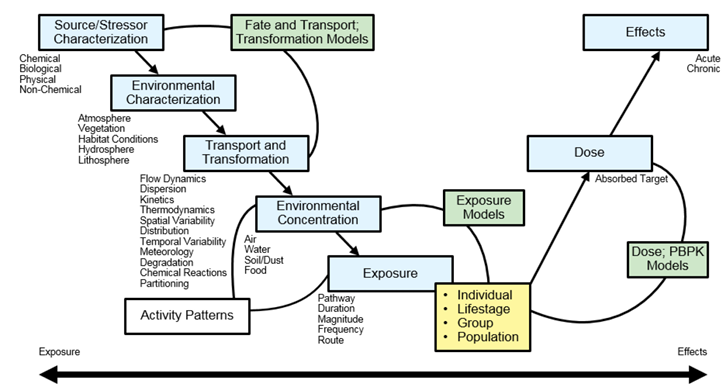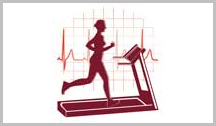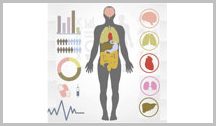Exposure Data
Overview
Exposure assessment is the process of estimating or measuring the magnitude, frequency and duration of exposure Contact made between a chemical, physical, or biological agent and the outer boundary of an organism. Exposure is quantified as the amount of an agent available at the exchange boundaries of the organism (e.g., skin, lungs, gut). to an agent and the size and characteristics of the exposed population. People can be exposed to agents and stressors in the air they breathe, food they eat, water they drink, and products they use or contact.

Data Types
Table 3-1 of the Guidelines for Human Exposure Assessment provides examples of data important for conducting exposure assessments.
|
Populations at Risk |
Sources | Environmental Data | Exposure Routes | Exposure-to-Dose Considerations |
Exposure Factors |
|---|---|---|---|---|---|
|
|
|
|
|
|
Environmental concentrations or exposures can be measured directly through media sampling or monitoring and analysis, or indirectly estimated using models. Search Expobox or visit the Exposure Setting page for data about contaminant concentration in media.
| Visual | Data Measurement and Modeling |
|---|---|

|
Direct MeasurementDirect (i.e., point-of-contact) methods measure the contact of the person with the chemical concentration in the exposure medium over an identified period. |

|
Biomonitoring and Reverse DosimetryBiomonitoring data provide a useful tool for assessors to identify chemicals in the environment and human tissues and to monitor changes in exposure over time. |

|
Indirect EstimationScenario evaluation is an “indirect estimation” method that relies on an exposure scenario to estimate exposures or doses. An exposure scenario is a set of facts, assumptions, and inferences about how exposure takes place. |
Exposure Factors
Access the Exposure Factors Handbook (2011 edition) for data on exposure factors.
